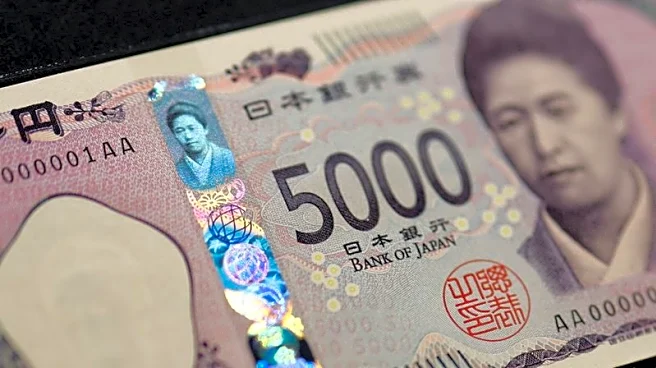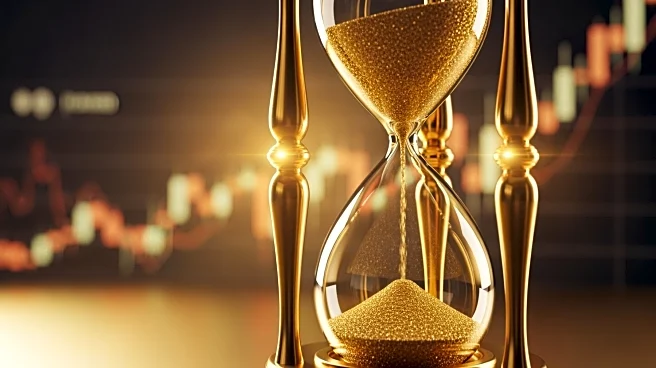What's Happening?
Gold prices have risen significantly, driven by expectations of further U.S. interest rate cuts and ongoing safe-haven demand. Investors are closely monitoring upcoming U.S.-China trade talks and inflation
data from the U.S. this week. Spot gold increased by 2.3% to $4,347.47 per ounce, while U.S. gold futures for December delivery climbed 3.6% to $4,366 per ounce. The recent record high of $4,378.69 was followed by a sharp sell-off, influenced by comments from President Trump that eased some trade tension concerns. The U.S. government shutdown, now in its 20th day, has delayed key economic data releases, creating uncertainty ahead of the Federal Reserve's policy meeting next week. Traders are anticipating a 99% chance of a rate cut next week, with another expected in December. Gold typically performs well in low-interest rate environments.
Why It's Important?
The rise in gold prices reflects broader economic and political uncertainties, including the prolonged U.S. government shutdown and trade tensions with China. These factors contribute to increased demand for gold as a safe-haven asset. The potential interest rate cuts by the Federal Reserve could further bolster gold prices, as lower rates make non-yielding assets like gold more attractive. The outcome of the U.S.-China trade talks could significantly impact global markets, influencing investor sentiment and economic forecasts. Stakeholders in the precious metals market, including investors and mining companies, stand to benefit from the current price trends, while industries reliant on stable economic conditions may face challenges.
What's Next?
Investors are awaiting further updates on the U.S.-China trade talks, with a planned meeting between President Trump and Chinese President Xi Jinping expected to proceed. The Federal Reserve's policy meeting next week will be crucial, as decisions on interest rates could influence market dynamics. The release of U.S. consumer price index data, delayed due to the shutdown, is scheduled for Friday, providing insights into inflation trends. Market participants will continue to monitor political developments and economic indicators, which could drive further fluctuations in gold prices.
Beyond the Headlines
The current economic environment highlights the interconnectedness of global markets, where political decisions and economic policies in one country can have far-reaching effects. The reliance on gold as a safe-haven asset underscores concerns about stability and confidence in traditional financial systems. Long-term shifts in trade relations and monetary policy could reshape investment strategies and economic priorities, influencing future market behavior.













